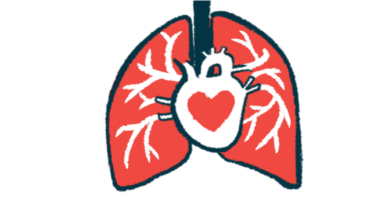Too much clotting may be linked to AAV cardiovascular risk
Patients more likely to have higher tendency for blood clots to form

Certain clotting markers are found at higher levels in the blood of people with ANCA-associated vasculitis (AAV) when their disease is active than when it’s in remission and symptoms ease or disappear, a study finds.
Too much clotting may explain why people with active AAV are at increased risk for a venous thrombotic event, which occurs when a blood clot forms in a vein. Understanding the underlying mechanisms could provide new targets for treatment. The study, “The intrinsic coagulation pathway plays a dominant role in driving hypercoagulability in ANCA-Associated Vasculitis,” was published in Blood Advances by researchers in the Netherlands.
People with AAV are more likely to present with hypercoagulability, an increased tendency to form blood clots inside blood vessels. This can lead to life-threatening conditions like strokes, heart attacks, and other cardiovascular (heart and blood vessel) problems.
Factor XII (FXII), a protein needed for the blood to clot, is found at levels more than twice as high in the blood of people with active AAV over those in remission. To understand if other clotting markers may be involved in hypercoagulability, the researchers tested the blood of 71 adults, mean age 62, with a diagnosis of AAV; 49 had granulomatosis with polyangiitis (GPA) and 22 had microscopic polyangiitis (MPA), the two most common types of AAV.
Activating blood clotting in AAV
Four (6%) patients had a history of a venous thrombotic event. Three had had deep venous thrombosis, where a blood clot forms in one or more deep veins. One had a pulmonary embolism, a sudden blockage of the blood vessels that supply the lungs.
All the patients achieved complete remission within six months, meaning their symptoms of AAV had disappeared. After a median 17 months, 17 (25%) patients had a relapse. Seven (10%) died of causes unrelated to blood clotting.
The proportion of patients with D-dimer levels above the upper limit of normal was significantly higher at presentation than at remission (73% vs. 44%). D-dimers indicate activation of thrombin, an enzyme that helps in blood clotting. Similarly, the proportion of patients with elevated fibrinogen levels was higher at presentation than at remission (91% vs. 69%). Fibrinogen also helps blood to clot to stop bleeding.
Blood clotting can be activated by factors in the blood (intrinsic pathway) or by tissue factor, a protein on the surface of cells outside blood vessels (extrinsic pathway). Both intrinsic and extrinsic pathways meet at a shared point known as the common pathway.
Thrombin:antithrombin complex (T:AT), a marker that indicates the activation of the common pathway, was increased in a higher proportion of patients at presentation (29% vs. 8%), but the difference wasn’t significant.
Clotting factor XIa (FXIa) bound to natural inhibitors of the intrinsic pathway — for example, C1 esterase inhibitor and alpha-1 antitrypsin — were at significantly higher levels at presentation than remission.
Thrombin was linked to clotting factors of the intrinsic, but not the extrinsic, pathway. “Thus, hypercoagulability appears to be associated with the intrinsic rather than extrinsic pathway,” the researchers wrote.
Hypercoagulability was linked to higher disease activity, higher levels of disease-causing antibodies, and C-reactive protein, a marker of inflammation. It also was linked to high levels of blood creatinine and excess protein in the urine, two signs of kidney damage.
“Taken together, our findings suggest an intricate link between hypercoagulability, inflammation, and disease activity in patients with AAV,” the researchers wrote. Still, the underlying mechanisms remain unknown.
A venous thrombotic event occurred in five (7%) patients within one month.Three had deep venous thrombosis and two a pulmonary embolism. Only T:AT levels were higher compared with patients without a venous thrombotic event (8.8 vs. 2.8 micrograms per liter).
“The driving factors of hypercoagulability are yet to be studied, but are most likely related to an interplay of increased disease activity, vascular inflammation, and endothelial [blood vessel lining] damage,” the researchers said, noting targets for intervention may include inhibitors of the intrinsic coagulation pathway and compounds that reduce the hyperinflammatory state, where an abnormal inflammatory response is mounted.






